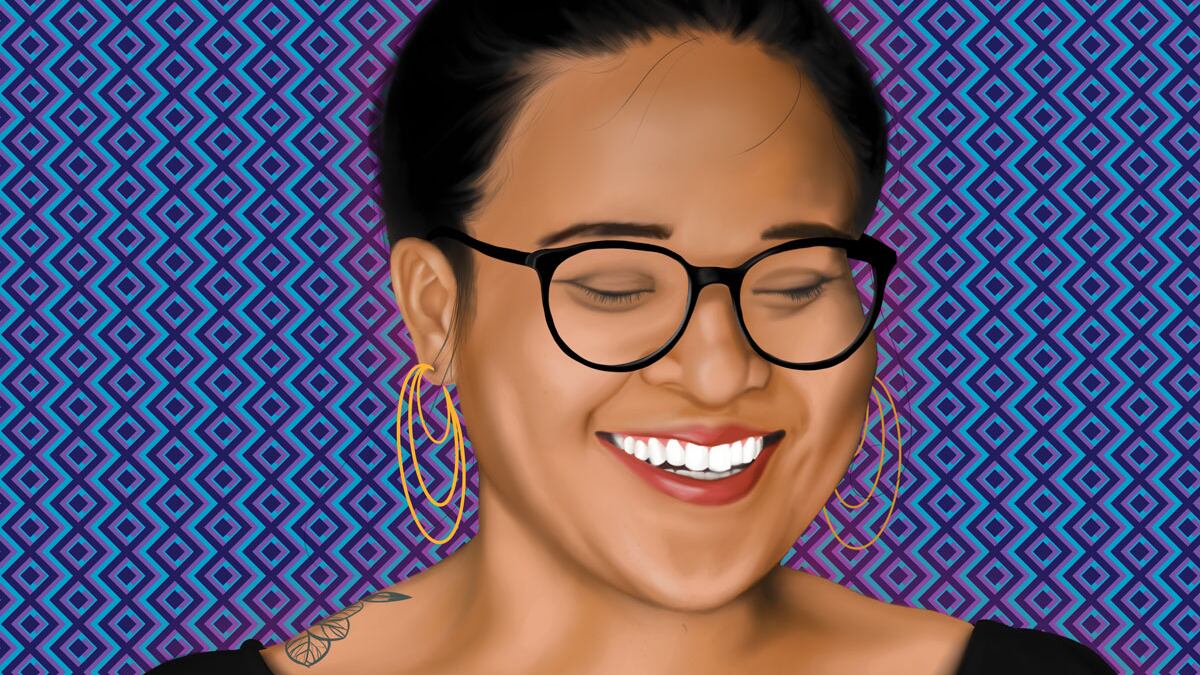Words by Jagger Blaec | @basic.blaec.girl
Celeste Noche walks into a room as an unassuming, pint-sized powerhouse. Coiffed with a top bun and glasses, one might not know she is poised to revolutionize the landscape of Portland's super-white creative ecosystem.
After experiencing countless micro-aggressions and seeing her fellow creatives of color go unnoticed and unheard when it came to their art, she made a decision to start Portland in Color. To some, this may not sound like an obvious act of giving, but to creatives of color trying to be seen, being given a platform and validation that our art matters is a most benevolent gift.
PIC is a directory that abolishes any excuse not to hire a person of color for a position. It offers a place to not only help companies diversify who they work with but a place for artists to tell their story and present their craft. We sat down with Noche to talk about how PIC plans to continue doing good in the community.
G!G: What inspired you to create Portland in Color?
I'd been freelancing as a photographer for a few years and felt like the Portland media and arts scene were both inaccessible and homogenous. It felt like the same white folks were always hiring the same white artists. Around the 2016 election, there was a bit more of a push for diversity, and though we started seeing more brown and Black folks in front of the lens, we had the same white folks behind the scenes. It baffled me that in a city as creative and resourceful as Portland, more Black and Indigenous people of color (BIPOC) weren't getting hired. So I started Portland in Color as a photo series, to create the work I wanted to get hired for, but also to begin highlighting my community.
What is your dream vision for how people might use Portland in Color as a resource?
I mean, ideally, industry folks will be intentional and inclusive with who they hire all the time so Portland in Color will be obsolete. But we're far from that, so my hope is that companies see Portland in Color as a resource they can invest in—both in finding BIPOC artists to hire and to recognize the labor we've put in to make their jobs easier. We want to keep the directory free and accessible to the public, but we also want companies to know they can hire us to help find specific artists, curate lists or work collaboratively to make more inclusive content.
It's also meant to be a hub where artists can find other artists to connect with and hopefully create work together. It can be isolating in this city, and anything to help foster more meaningful collaborations is a win.
What impact have you seen PIC have on communities of color since its inception?
PIC really began to grow when I consulted Emilly Prado for help with a Regional Arts & Culture Council grant, and she ended up joining the team and helping to define what our purpose was as a platform and organization. Not only has she helped give more depth and nuance to our interviews, but establishing a directory has been a huge source of positive connection. We've also been able to host more community-centered events and create partnerships to expand PIC's reach while creating more equitable access to institutions in Portland media. The collaboration has primarily been just the two of us thus far, but what we've been able to accomplish feels like a small sampling of what's to come.
And outside of the specific work opportunities found via directory connections, which are always so great to hear about, the biggest impact I've noticed is hearing from folks who scroll through the directory and feel seen. It's life-giving to see a growing roster of BIPOC creatives, knowing that all of this talent is in our town and this list isn't even close to exhaustive. It's a nice reminder that we aren't alone, we're out here creating things and doing the work, taking up space.
How can we expect to see PIC evolve?
We're currently revamping the website so it's easier to add new artists and are also working toward collaborations and consultations with local companies. We've got a strategic partnership with Travel Portland to create content sourced from our community, and in the next few months are looking to roll out more consultation and Diversity, Equity and Inclusion work. And look out for our exhibition collaboration with the Portland Art Museum that will showcase local Black women femmes and nonbinary artists in Portland, alongside artist Hank Willis Thomas.
How can orgs and institutions do better at making sure they are nurturing work environments to be inclusive spaces?
If they haven't already, the first step is hiring a DEI consultant and making sure everyone in the company attends and engages, especially white upper management. We've heard from a lot of folks that their companies are hiring DEI consultants but not requiring everyone to attend, when it's often upper management who need to hear these messages.
On top of that, companies need to be honest with themselves about their diversity and hiring efforts—if they look around and the room is homogeneous, they should already know they have a lot of work to do. Inclusive staffing takes time, but while those efforts are materializing, there should be clear resources and programs for individuals from marginalized backgrounds. The labor shouldn't always fall on the one Black or brown person to explain everything, and white folks need to do the extra work to educate themselves or hire BIPOC specifically for this kind of work.
